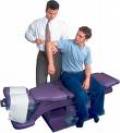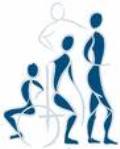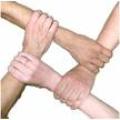
 |
 |
 |
 |
Physiotherapy Reviews
Stroke Rehabilitation
Why Physiotherapy Is So Important in Stroke Rehabilitation
Stroke rehabilitation is sometimes an uphill climb. After a stroke, patients can be left with paralysis, especially one - sided paralysis. Pain, as well as sensory deficits, has to be managed. Physiotherapy is a key part of the treatment picture.
Physiotherapists begin stroke rehabilitation same soon after the stroke has occurred, stint the considerate is standstill in acute care. The physiotherapist will first do an yardstick to determine what disabilities must be dealt with during stroke rehabilitation.
Some of the possible problems are: lack of strength and endurance, limited range of flow, problems with sensation in the limbs, and troubles walking. Stroke rehabilitation will focus on the problems that the patient displays. A plan for treatment will be devised.
Patients will learn to end limbs that the stroke has made temporarily useless. During stroke rehabilitation, it will be determined whether these limbs will reach their previous potential. If not, the physiotherapist will teach the patients ways to manage without their full use of the limbs.
One problem of stroke rehabilitation is called learned nonuse. This is when stroke patients do everything in their power to avoid using limbs that have been affected by the stroke. If by oneself to their own devices, they will cripple the limb further by letting it atrophy through nonuse.
Physiotherapists usability stroke rehabilitation to make sure that patients do indeed work to use their impaired limbs. They can do this in a number of ways. Sometimes it helps for the physiotherapist to tap or stroke the limb they want the patient to use.
If the patient will not easily participate in active range of motion exercises, passive ones can be used where the physiotherapist moves the limb herself. Other times, the compassionate will try to use the affected limb but will naturally fall back on the limb that is functioning well. In this case, stroke rehabilitation may affect gently restraining the healthy limbs.
It can be a difficult task of stroke rehabilitation to help victims relearn switching from one task to another. This is partly because of problems in the brain. The cues to move the muscles and joints in order to change movements are slow in coming. This is why practice is so important. The more times physiotherapists help a patient with this, the easier it becomes.
Recent studies have unobstructed that stroke rehabilitation can continue long after the hospital stay. In the preceding, stroke victims were inured a short round of physiotherapy during the time they were in the hospital and for a few weeks shortly afterwards.
Ultramodern research shows that physiotherapy can promote more advanced stroke rehabilitation if it is continued progressively at home. Patients will learn to walk better. They will payoff strength to do daily chores. They will and achieve sharpened posture and more balance, which can prevent falls.
Stroke rehabilitation involves a number of therapies, all designed to restore function to the patient's affected limbs. Electrical stimulation, hydrotherapy, and games have all been used. Stroke rehabilitation is not complete off-track the help of physiotherapy services.
 |
 |
 |
Dietary Supplements Information
Vegetarian Cooking Information
Vitamins And Supplements Information
Health And Fitness Information
More Physiotherapy Reviews
... patient and not by the patient. There are other modalities that are commonly used. Heat and ice packs are a well - recognized form of passive physiotherapy. They can be used separately, or they can be used alternately by a person who is hit from acute lower back pain. A transcutaneous electrical nerve ...
... procedure for any type of health related problem. It is wise to be thorough in explaining past problems and conditions that seem to run in the family. This can have a bearing on your treatment. It might even point to some disease or disorder that no one suspected that you had. A thorough physiotherapy ...
... hospitalization. Physiotherapy offers help with regaining strength and adapting to life with the disease. Neurological conditions that are autoimmune diseases are difficult to treat. Myasthenia Gravis is sole such illness. It causes active weakness because of a lack of announcement between nerves and ...
... the same time one starts college. At other places, one simply takes about three years of sharpen after the bachelor's degree. Doctoral degrees posses similar requirements. Before one gets into a physiotherapy degree program, one needs to meet specific requirements. Coursework in various life sciences ...

|
| Copyright © 2006-2012 Internet Marketing Tools, All Rights Reserved |